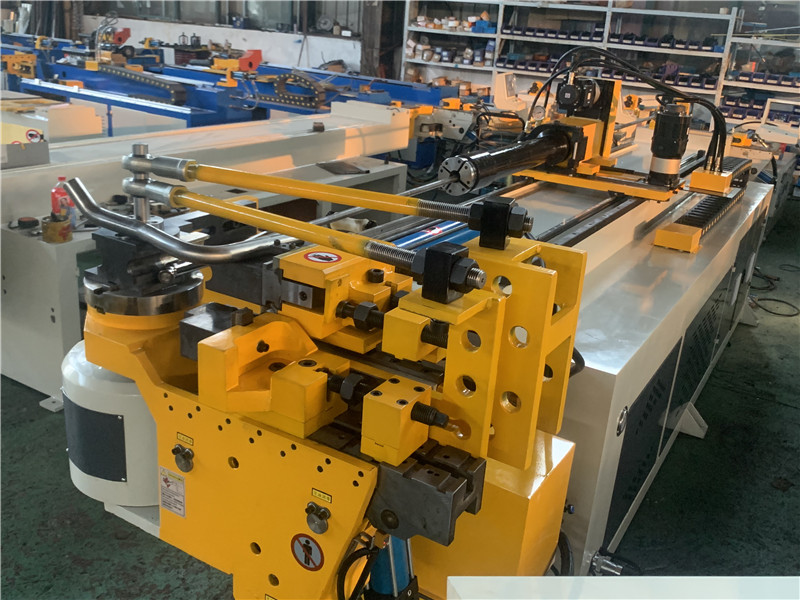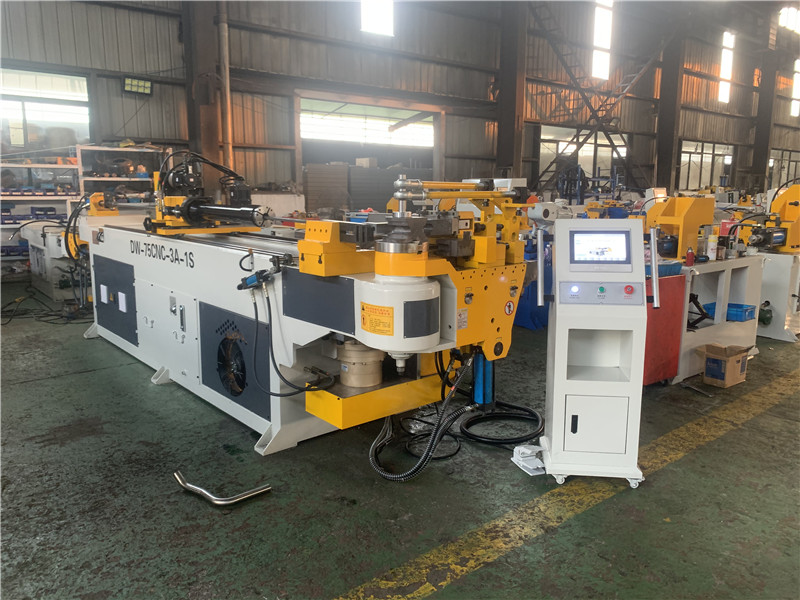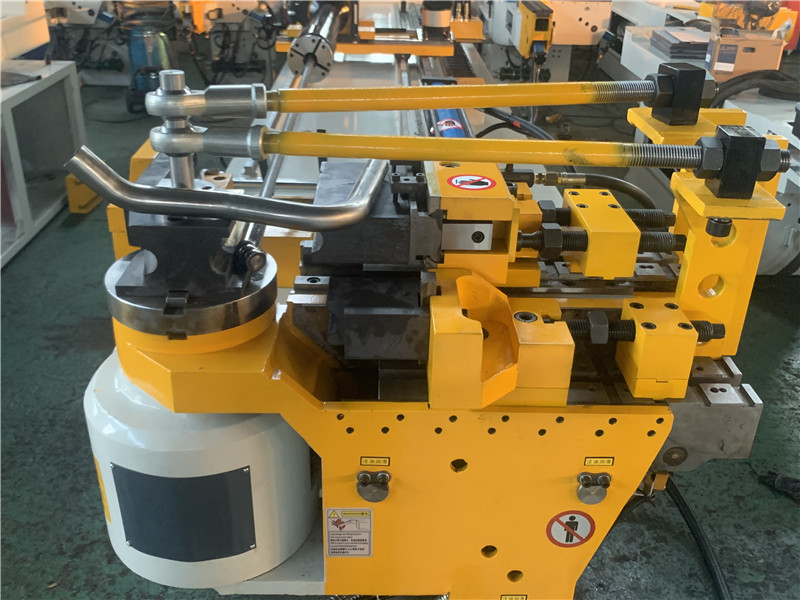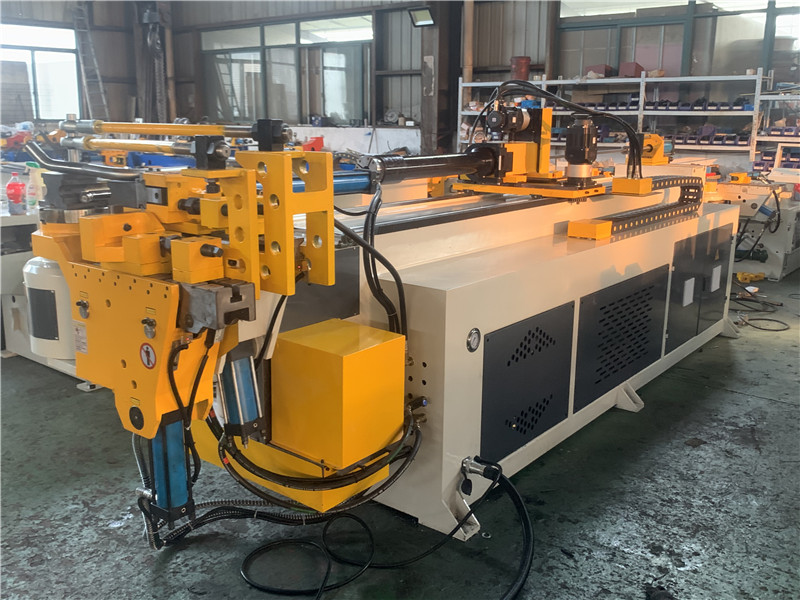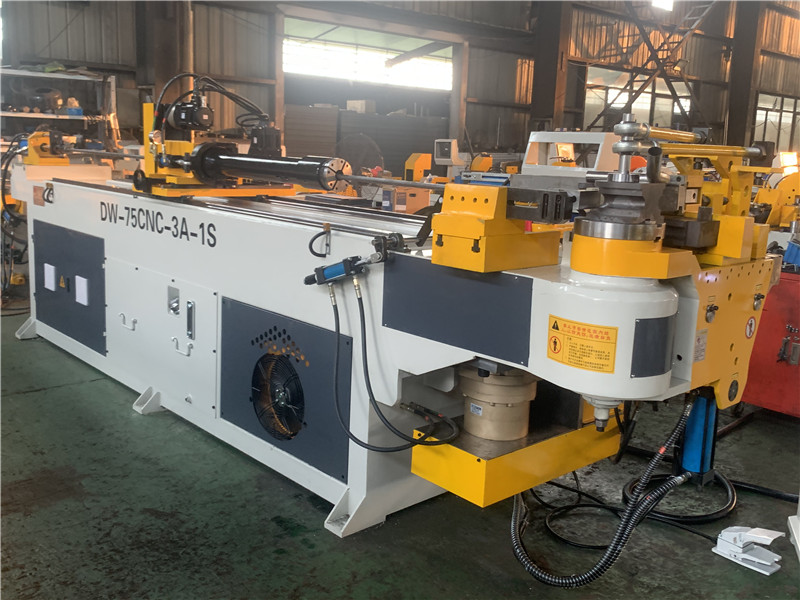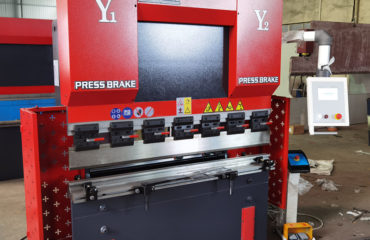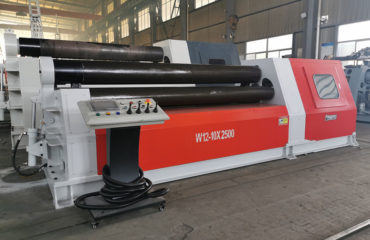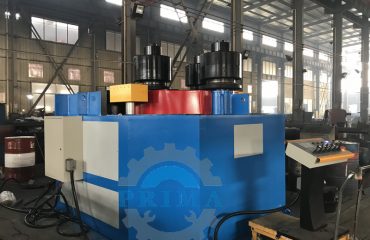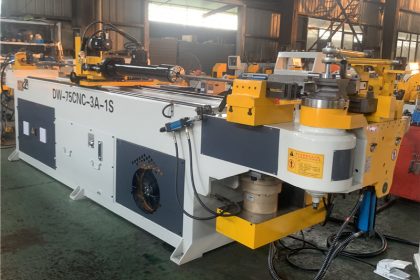
Three-dimensional 3D automatic cnc pipe bending machine and its mechanism
The three-dimensional 3D automatic pipe bending machine is an innovative product with high technology content. Its advantages are high repeat positioning accuracy, good reliability, simple operation, convenient maintenance and moderate price. The machine can fully meet the large, small and large batch production of various body frame bending components of various types of high-, medium- and low-speed passenger cars. It is a necessary special equipment for passenger car manufacturers to upgrade their production technology. The three-dimensional automatic pipe bending machine control system is mainly composed of human-machine interface (HMI), programmable logic controller (PLC), three sets of servo motors, oil cylinders and cylinders, etc. The human-machine interface (HMI) with formula function can store hundreds of Process parameters of various workpieces to realize man-machine dialogue. PLC uses Panasonic FP-X, which can realize four-axis positioning and two sets of interpolation functions at the same time, which meets the complex control requirements of the three-dimensional pipe bending machine control system.
Three-dimensional 3D automatic cnc pipe bending machine and cnc pipe bender machine mechanism
The servo motors in the equipment all use domestic advanced AC servo motors, which are used to realize the rotation angle control of two axes (bending axis and rotation axis) and realize the feed control of one axis (feed axis). The axis and the bending axis perform linear interpolation to complete the bending function. The displacement of the two axes is determined by the bending angle, and the rotation axis is rotated and positioned according to the command. In addition, the solenoid valve cooperates with the oil cylinder and the air cylinder to realize the power of the pipe bending, such as the main clamp, the auxiliary clamp, the material clamp, the core rod, the trustee and so on.
Servo motor plays a vital role in this equipment. Good servo performance is the key to the normal operation of the whole equipment. By adjusting the parameters, the servo motor runs in the best state to ensure the normal operation of the whole equipment.
Due to the different transmission mechanisms, in order to ensure the speed and accuracy of the equipment, each axis needs to properly adjust the number of pulses required for one revolution of the final output end, but the two axes that implement interpolation need to ensure that the number of pulses is completely Similarly, this problem can be easily solved by setting the electronic gear ratio of the servo motor. Since there are hundreds of types of workpieces to be processed, the number of elbows of each workpiece can be specified as many as 20. Since the relevant data of each elbow needs to be called in sequence, in order to simplify the program, you can consider using the index register when writing the program. To continuously call the data stored in the man-machine interface recipe, and then convert it into the number of pulses through a series of real number operations.
Due to the different types of workpieces processed by pipe bending machines, there is often little margin in the linear feed direction during processing at the final station. In order to prevent the collision between the material clamp and the auxiliary clamp, each action needs to be processed in a specific combination sequence.
